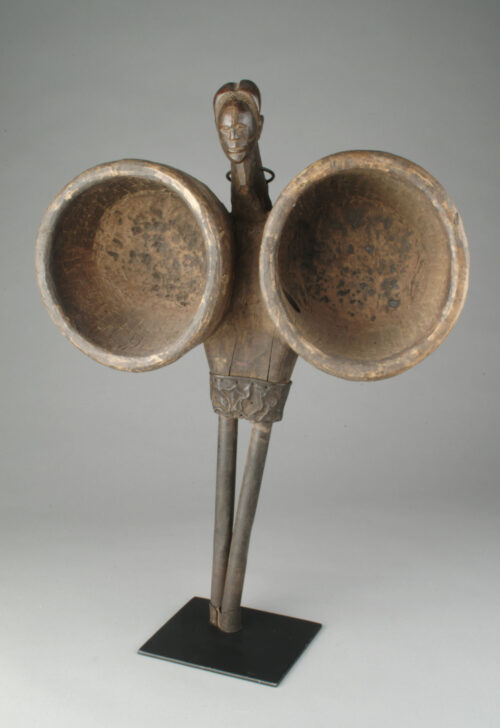Bellows
Luba

Description
Subject Matter:
Attributed to the southern Luba Shaba from the Democratic Republic of the Congo, this pair of bellows would have been used by a smith to heat a forge. The male figure depicted here represents the smith himself.
Smiths were highly esteemed in Luba society since they were exclusively responsible for the production of iron, copper, and other metal products. In fact, the Luba believed that the ability to transmute minerals into objects of cultural, social, and economic value required supernatural powers.
The Luba associated bellows with procreation and reproduction, and the smelting process is described in sexual terms. For instance, the furnace symbolizes the body of a female, or the smith’s wife, while the bellows represent a phallus. During the smithing process, the smith and his aides abstain from sexual relations, out of fear that the metal product being created may become misshapen or disfigured.
Reference:
Maurer, Evan M. and Niangi Batulukisi. Spirits Embodied: Art of the Congo, Selections from the Helmut F. Stern Collection. Minneapolis: The Minneapolis Institute of Arts, 1999.
Physical Description:
This set of bellows features an elegantly carved male head as a finial. Sitting atop a cylindrical neck that has been pierced with a metal ring, the polished male head features an ovoid face; a high forehead with a vertical line; scarified lines across the cheekbones; and, a coiffure with a finely, detailed pattern at the front and parted down the center.
The man’s “torso” is a trapezoidal piece of wood while two long iron rods functioning as handles represent his “legs.” A pair of round chambers—one on each side of his torso—would originally have had leather bags attached to them, allowing for the pumping of air to heat a fire or forge.
Usage Rights:
If you are interested in using an image for a publication, please visit https://umma.umich.edu/request-image/ for more information and to fill out the online Image Rights and Reproductions Request Form.